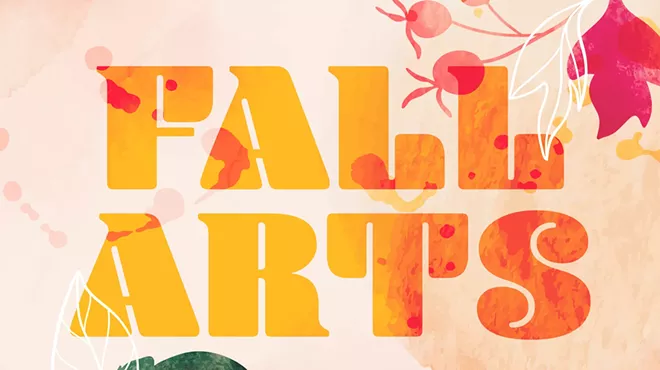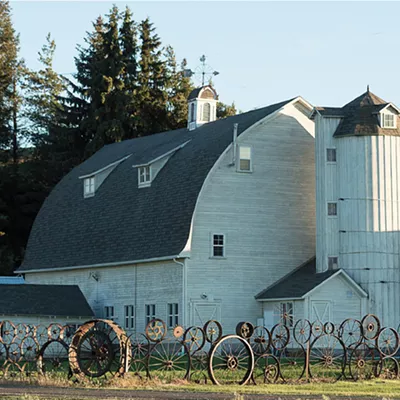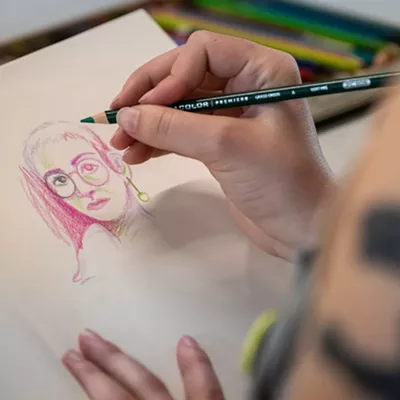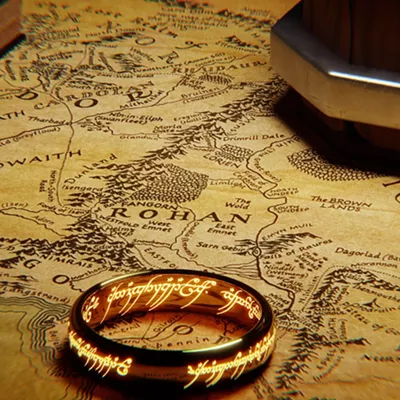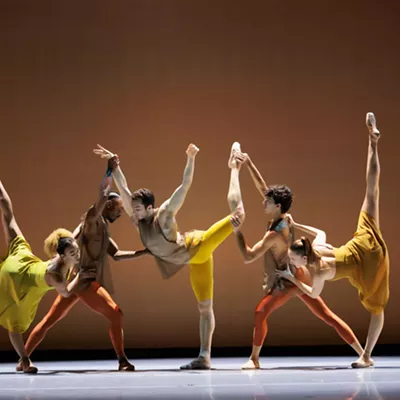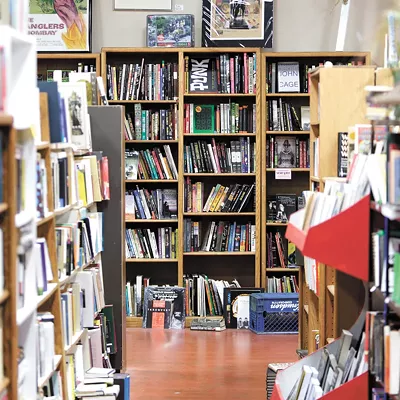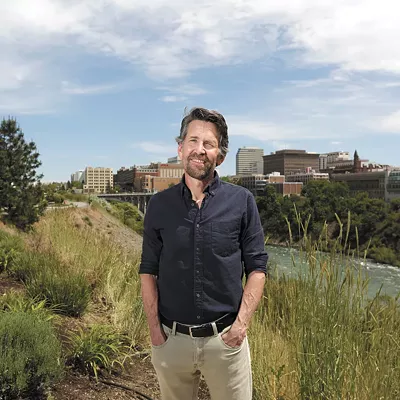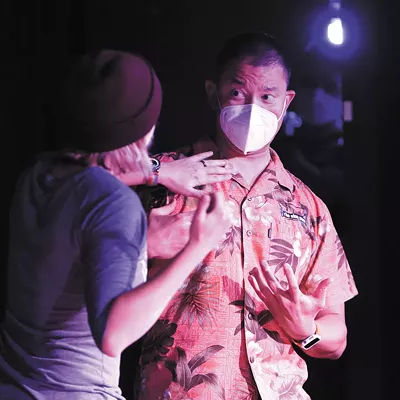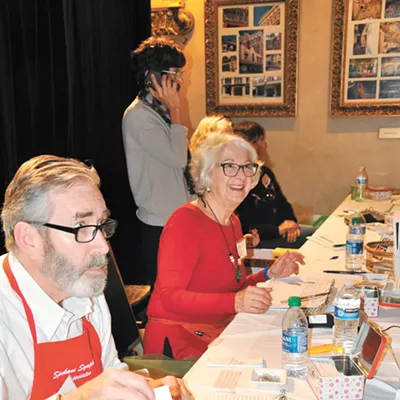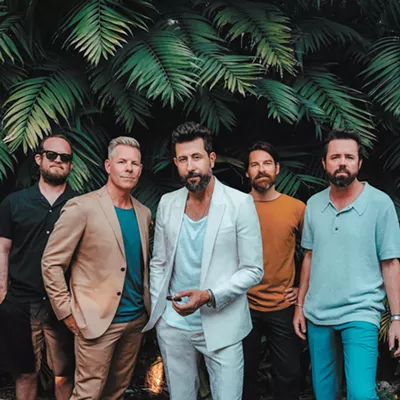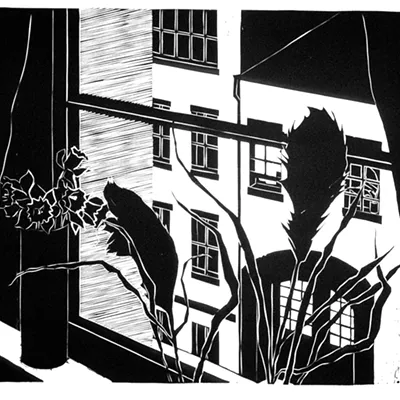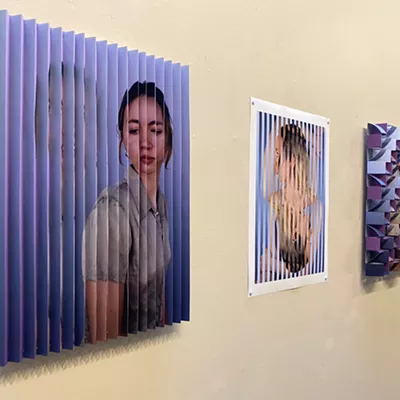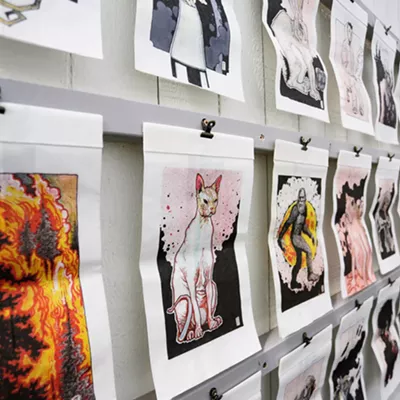We know the arts have value because movies get made, photos are taken, people dance and draw and sing, regardless of whether it's for pay or personal enjoyment.
Both matter, as we discovered checking in with several rural Inland Northwest communities to see how the arts play a role in life outside the Spokane/Coeur d'Alene metro area, and how those communities fared the past 18 months. This is a look at the value of the arts among pine trees, wheat fields and country lanes.
CHEWELAH IS CERTIFIABLY CREATIVE
Ask Chewelah resident Mike Bentz if you can assign dollar amounts to the arts and he perks up. Retired from a career with a national financial services company, Bentz speaks numbers, not metaphors."One of the things you consistently hear from artists is they're marginalized," says Bentz, who has lent his financial wherewithal to getting Chewelah established as a state-certified "creative district."
"When you talk about the arts in concrete terms of economic impact — in numbers — you'll be more in sync with business owners, chambers of commerce, potential financial donors, etc. that look for an understanding of what 'creatives' can add to a community," he adds.
And the arts do make an impact. In 2017-18, for example, Washington's "creative economy" was 4 percent of the workforce, yet contributed nearly 8 percent of the state's GDP, according to the Washington State Arts Commission, which created the Certified Creative Districts Program in 2017.
By comparison, Idaho's arts and culture economy contributes just shy of 3 percent of GDP, and uses a different approach to creative placemaking.
The Idaho Commission on the Arts funds nonprofits, schools, educators and artists through a system of grants, and is developing a toolkit for Idaho communities to launch their own, local cultural plans, says ICA Executive Director Michael Faison.
In Washington, the WSAC is considerably larger and better funded than the ICA. A dedicated staff member, Community Development Manager Annette Roth, helps interested communities navigate the lengthy application process.
Roth worked with Chewelah to help expand its view of the creative sector. In addition to the Chewelah Center for the Arts, the Arts Guild, ArtWalk, Trails End Gallery, a historical museum, designers, architects, musicians and a theater group, Chewelah's creative economy also includes food and beverage, web developers, cabinet makers, auto restoration, tattooing and educators.
"The way I define it is anyone who works with their hands," Bentz says. "What that does is it broadens the horizon and validates what a creative district is all about."
Longtime resident Diane Evans saw her community's creative potential early on. A founding member of the 22-year-old Arts Guild, Evans has been active in a range of community efforts.
In 2018, after hearing about the WSAC program from an artist friend, she helped organize a community meeting.
"From there, we came up with a plan, and another plan, tweaking and revising plans, on and on," says Evans, who helped navigate the WSAC application guidebook — all 13 sections.
Application criteria addresses geographic, accessibility, financial, administrative and other requirements. Regions must be walkable or otherwise accessible to visitors, for example. They need to promote both the community's uniqueness, aka "brand," and its creative sector, and create long-term plans that address cultural, economic and workforce development.
In June 2019, just two months after submitting its application, Chewelah was certified, one of only eight CCDs, and the first rural one in the state.
While CCD's goals vary according to the community, certification means funding and support to attract visitors and creatives alike; grow economic opportunities for all; and develop heritage and preservation initiatives. Overall, CCDs aim for making the region a more appealing place to live, work, visit and do business.
Being a CCD has enabled Chewelah to fund artist murals, reinforcing the community's identity — its theme is "a place for all seasons" — and enhancing the downtown core. Chewelah also created "wayfinding" signage to direct what it expects will be an increase in visitors.
Along with donations from the Spokane Tribe of Indians, Chewelah also developed a consistent brand identity, internet and social media presence and a membership program.
Last December, the Department of Transportation installed signage along Highway 395 to notify visitors of Chewelah's status as a CCD. As the state's program grows — two years into the program, at least two dozen applications are in the pipeline, Spokane and Pullman included — this signage contributes to the message: destination Chewelah.
The future of Chewelah's CCD is, literally, in the community's hands. Organizers recently scheduled a community meeting to involve stakeholders in determining the town's path forward.
That's especially important in rural communities transformed by both declining populations and declining extraction-based economies like timber or farming, Roth says. CCDs offer opportunities for communities to recognize change and take a more active role in the process.
"People who live in rural communities love their communities just as much as people who live in urban communities and want to preserve and celebrate the things they love about their community," Roth says.
ARTSY INSIDE AND OUT
Joyce Weir loves her community of Newport, population around 2,200 and located on the Idaho border in the lower east corner of Pend Oreille County, surrounded by forests and the nearby river. That geography defines the region's history — timber, railroading — and is one of many challenges in running CREATE, which stands for Community Resource: Expression for the Arts through Education.
Located in a former church, CREATE Art and Community Center is busy indoors and out: arts classes for kids and adults creating things like fused glass, painting and antler baskets; musical and theatrical performances; yoga; poetry readings; ballroom dance lessons; and more.
"I'm so thankful for the diversity of the community groups who use the space," says Weir, a former dental hygienist and master gardener who serves as board chair of CREATE, which she helped found in 1998.
Before that, she was part of a group volunteering to bring art into the district's three schools. When they found a building that might serve as an arts hub, they raised funds — initially $30,000 — for its acquisition, upkeep and upgrades.
CREATE continues to grow. Once members revamped the stage, they were able to host a Newport-based theater group, Pend Oreille Players, for example, and with Kalispel Tribe funding for kids' programs, they revitalized their basement teaching space.
"We don't have those entities who need and want to make community-enhancing donations," Weir says, noting that the paper mill in nearby Usk closed last year. The pandemic didn't help things. "When we're shut down, we can't bring in any income at all," she says. Instead, they rely on a host of volunteers and the generosity of the community, like donations from STCU and the local Ace Hardware.
Membership dues ($25-50) and event fees help, as did a CARES Act grant in 2020 that covered utilities and insurance, all of which had gone up, Weir says.
But some things have to wait until the resourceful six-member CREATE Board can figure out a way to do more with less, like the transition to digital sound and video capabilities they're needing.
"In the bigger cities, they just say go hire someone or go call someone," Weir says, laughing a bit as she describes the delight when someone brought cookies for Thursday's "Coffee in the Garden" or an extra-large package of toilet paper.
"We try and take care of what we can the best we can."
KEEPING THEATER ALIVE ON THE PALOUSE
They're used to doing more with less at Regional Theater of the Palouse, say Executive Director John Rich and Associate Director Michael Todd. During their theater's mandated closure, however, these creatives had to get even more so.
When they opened in 2007, their operating budget was a scant $5,000, Rich says. They've grown it to approximately $132,000 through a combination of summer camp tuition and performing arts workshops, ticket revenue, donations and local support. That enables them to put on four Broadway musicals and plays per year at roughly $16,000 to $20,000 a throw, plus two to three classic children's performances.
RTOP was smack dab in the middle of rehearsal for Thoroughly Modern Millie in March 2020 when they, along with the rest of the state, were ordered closed. An actress from New York City ended up stranded in Pullman, so RTOP put her up in their separate artist-in-residence facility.
"It was kind of traumatic artistically," says Todd. "It left our production team in a fog."
But the show must go on, so RTOP scoured the budget for ways to save, like taking trash home to avoid that service fee and shutting off the water for a bit, says Rich.
They adjusted their mission from promoting "the Arts and Art Education through quality theatre" to "keeping the arts alive in people's hearts and homes," Todd says.
Some things they did to fulfill their revised mission are keepers: holiday-themed, communitywide contests; collaborations, like with Washington State University on a STEM-themed podcast featuring RTOP voice talent; and Zoom-based instruction, which has broadened the theater's reach.
Like Newport's CREATE, the theater also received a CARES grant. With it they transferred workshops online, resulting in the unintended benefit of participants getting a YouTube video of themselves for their portfolio.
And they opened the theater as a study hall for kids who had nowhere to go, using the desks left over from a production of Matilda.
"While it didn't reach the masses, it really helped individuals," Todd says. "We're an oasis in wheatfields."
The theater is not fully staffed, Rich says, and it probably won't feel normal again until rehearsals begin for its next in-person show (Andrew Lloyd Webber's Sunset Boulevard opens Sept. 30), but they made it through.
"The arts survive because you really work," says Rich.
COLLABORATION AND CREATIVITY EXPRESSED THROUGH WOOD
There's a reason it's called woodworking; it takes effort. And tools. And having an extra set of hands or someone to teach you or give you feedback is good, too.
"Alone, a woodworker might spend decades amassing the tools, space and experience necessary," says woodworker Jim Christiansen, who unofficially founded the Palouse Woodworkers Collective in 1985 with a shop next to his house he opened to other woodworkers.
"By dividing cost, they can keep it goin' and even do better," Christiansen says. He added a little more structure to the small, invite-only group nine years ago, consolidating some tools and charging a modest amount to use them.
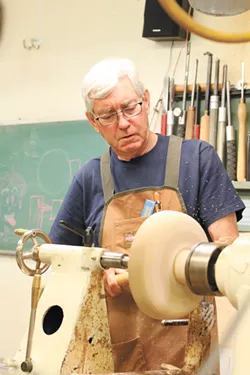
That interested artist Jill Kyong, who first saw Christiansen's woodworking at an exhibition inside the Dahmen Barn. The availability of a well-stocked facility that she couldn't possibly achieve on her own appealed to Kyong, who figures that's also one of the reasons she pursued metal casting and bronze at the University of Minnesota.
Kyong is one of eight members who might pay up to $150 each month to access a 2,200-square-foot building chock full of tools: drill press, chop saw, two lathes, belt sanders, dust collectors, joiner, planer, hand tools, safety equipment, and a finishing area.
It's "99 percent of anything you'd need," says Keith Welsh, a former geologist who relocated to Pullman four years ago, bringing with him 20-plus years' experience from a Louisiana woodworking collaborative he helped start.
Although he is building his own shop, Welsh really likes the group, which this spring teamed up with eight additional artists to exhibit their creations at The Art Spirit Gallery.
"COVID didn't touch us here," says Welsh, who says that they all trusted each other and, crediting Christiansen's mentorship, they all feel welcome.
That's by design, says Christiansen, a retired teacher and administrator whose background includes working in special education.
At 78, Christensen has built a reputation for not only his intricately carved surfaces and knowledge of woodturning — working with a lathe to hollow out a form — but also his collaborative approach.
"Our focus is more on people than on what they 'do,'" he says.
HI-FLYING IN CHENEY
Some art forms simply can't be completed on one's own, and that's the point.
Square dancing, for example, is a group effort. A caller guides dancers through the series of steps, whose names like promenade and do si do illuminate the art form's early European (particularly French) ancestry. In addition, four pairs of dancers are typically needed to form a square, and up until the advent of recorded music, there would also be musicians.
The whole affair would have been — and continues to be — a party; the more squares the merrier.
"Second-best group to church," says 60-something Kelley Sweet, who got into square dancing as a young, single parent in search of fun, safe activities for her and her children.
Sweet belongs to three of more than 16 square dancing clubs scattered across Eastern Washington and North Idaho, including Hi-Flyers out of Cheney.
Hi-Flyers dates to 1971 when someone — a captain whose name has been lost — organized dances on Fairchild Air Force Base. The club eventually moved off base and now coalesces Wednesday evenings for lessons at Cheney's newly refurbished Wren Pierson Building.
Hi-Flyers dances are typically every third Friday, September through November and January through May. Some or all of the club's 28 members ranging from ages 40 to 85 might attend, plus dancers from other clubs.
Guest dancers' entry fees and activities like silent auctions help bolster the host club's revenue, which goes toward insurance, hall rental and the cost of a caller. More importantly, guests strengthen and expand the square dance community.
"This is a very supportive group of people to have fun and travel with," says Sweet. "Many members have been a phone call away when needed."
Dances take place in rented halls, grange halls and dedicated dance facilities like the North Spokane Dance Center on Freya and the Western Dance Center in Spokane Valley.
Snacks (but no alcoholic beverages) are served at the dances, although groups might go out before or after the dance, Sweet says.
They also have an annual picnic in August, which they had to forgo last year due to the mandated shutdown. Although they stayed in touch via Zoom, emails, phone calls, the Hi-Flyers web and social media page, and the like, it wasn't the same as dancing together, Sweet says. She missed the one-on-one interaction, hearing about each other's families and just seeing one another, she says.
"Dancing is always a fun time of moving to the music," Sweet says. "We have fun working together to complete the patterns of the dance."
A COLORFUL APPROACH TO KIDS AND THE ARTS
It's pure coincidence that Claire Christy attended an elementary school named Hope while growing up in Clark Fork, Idaho. Hope was one of many benefits of a special program called Kaleidoscope.
"You came in from lunch and the Kaleidoscope lady was there," Christy says, reflecting on her years at both Hope and Sagle Elementary schools, "and I knew I was going to have a good day."
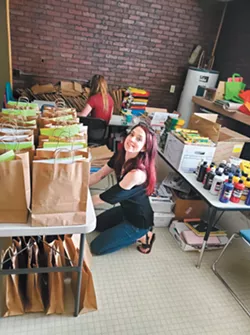
Created by the Sandpoint-based Pend Oreille Arts Council, Kaleidoscope is a volunteer-led program providing one hour of art instruction a month to the bulk of Lake Pend Oreille School District's third through sixth graders since 1992.
Kaleidoscope was a touchstone for her, says Christy, who remembers learning how to draw human figures in sixth grade, lessons she carried into her college art classes.
"I loved art, and I loved to draw, and I loved color," she says, "but I think Kaleidoscope opened my eyes about how much [more] there was to learn."
Now Christy helps coordinate Kaleidoscope, which serves upward of 1,500 students annually. Roughly 20 Kaleidoscope volunteers pair up with classroom teachers to create hands-on lessons including art techniques, art history, vocabulary and other content that supports required grade-level curriculum.
Art, however, isn't supported the same way as math or reading. Although the district pays for shared elementary music teachers, only two of the nine elementary schools have an art teacher. Both are grant-funded, and thus subject to change each school year.
So although Idaho provides K-12 content standards for visual art (and music, dance, theater, etc.), they don't stipulate how that instruction should take place for elementary students, putting the onus on the classroom teacher.
In smaller, rural or less affluent areas, this is the rule, not the exception. In Idaho, for example, Coeur d'Alene funds art teachers districtwide, but the Lake Pend Oreille district does not. In Washington, elementary kids in Spokane schools typically have a dedicated art teacher, but not in East Valley.
Kaleidoscope addresses the art instruction gap in a place that otherwise paints itself as an "arts town," for both the visual and performing arts.
The Sandpoint music scene, for example, is fed by the long-running Festival at Sandpoint and the new Music Conservatory, while the 93-year-old Panida Theater is a hub for a variety of theatrical, musical and cultural events. Meanwhile, the visual arts get a boost from the town's arts commission and growing public art program, as well as the Pend Oreille Arts Council, which recently celebrated its 43rd year in operation.
POAC's other visual arts initiatives include art exhibitions and hosting the long-running arts and crafts fair, which is nearly as old and as large as Coeur d'Alene's venerable Art on the Green.
The council also coordinates an annual summer art walk, which this year encompassed more than two dozen businesses and 100 artists, according to Board President Carol Deaner, who began her tenure with POAC as a Kaleidoscope volunteer.
"There's a lot of sharing that goes on," Deaner says, describing some of the benefits of in-person art instruction, which in March 2020 was abruptly halted due to mandated school closures.
That prompted POAC and those responsible for putting on Kaleidoscope to re-evaluate. What would it take, they wondered, to continue delivering lessons, and was it worth it if they didn't know how or even if teachers would be able to implement them? The culminating art show was not likely to happen.
As they've done for 43 years, Deaner says, they figured out a way to make do with what they had, focusing on what they could do. POAC, which is funded by grants, donations and fundraisers, hoped the community might help even more.
They did.
So, only one month into joining the POAC, Christy found herself organizing thousands of supplies — pencils, markers, itty-bitty containers of tempera paint — so students could complete the March Kaleidoscope activity.
As she was stuffing 800 paper bags, Christy says, she motivated herself by thinking about what art did for her as a kid.
"It gave me an outlet," says Christy, who figured that even if only one or two kids got something out of the art supplies or the Kaleidoscope lesson, it was definitely worth it. ♦





